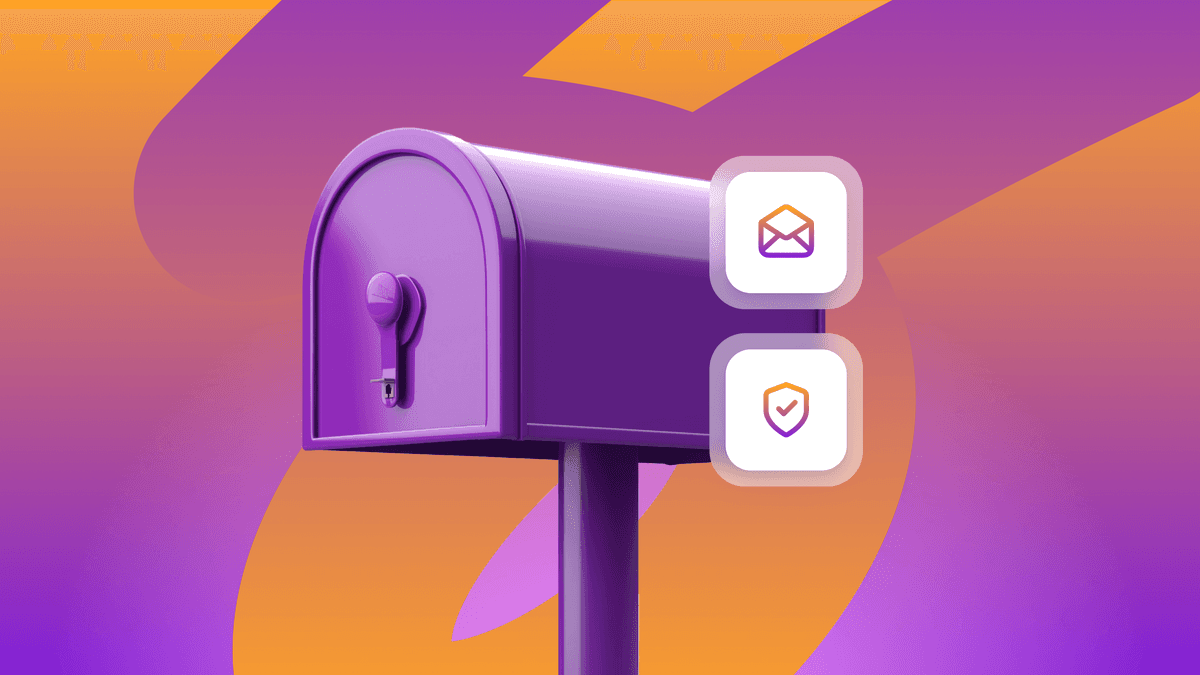What Online Dating Can Teach us About Mobile Marketing
Published on February 14, 2018/Last edited on February 14, 2018/8 min read


Team Braze
As marketers, we seek, initially, to attract. To attract people for a first time encounter, and then to charm with enough verve, to click with enough chemistry, to provide a certain something, to keep people coming back.
We can’t speak for everyone, but this dynamic fairly well describes what it’s like to date, and especially what it’s like to date online.
Expectations don’t always line up with reality. The whole getting-to-know-you bit that historically happened in person now happens through thumbs and screens. By the time you really mesh with the person on the other end, you may have an idea of them in your head that is not at all what you thought it would be. Communication can be stifled. The ick factor can kick in. And before you know it, you (or they) are hightailing it in the other direction.
Ok, read the last few sentences and apply them to online dating. Now apply them to digital marketing.
The similarities are clear.
So, what can we learn from online dating to improve our approach as marketers?
(And, not for nothing, maybe our professionalism as marketers can inform a better personal experience of online dating!)
There are certain approaches to the dating game that make finding a match…unlikely. If you’ve ever dated online, you’ve probably encountered some of these personas yourself, and you know how much of a non-starter their presentations are. None of the people we describe are what you’d call a catch. In the vein of our “Don’t Be That Guy at the Holiday Party” piece, we’ve reinvented these personas through the lens of online dating. Because nothing gets us to that face-palm place of “omg, I do that” faster than a cheeky analogy. In all these cases, you, marketer, are playing the part of the customer.
Pushy Patrick: he’s overconfident, lacks mystery, assumes incorrectly that he’s the best thing going, and tries to close the deal way before the time is nigh
Patrick is, shall we say, confident. Normally that’s a good thing, but Patrick is so confident that he puts it right in your face. He comes on too strong then disappears, then reappears as if no time has passed. He talks over you and doesn’t ask you much about yourself. He treats you like a sure thing, flirts with the person next to you at the bar, and doesn’t really back up his bravado with anything especially impressive. Even if you were ready to like him, you find it difficult to stay interested. You have a million choices out there. Patrick is a dime a dozen. But he doesn’t seem to realize it. It’s easy for you to remind him of this fact by walking away and not coming back. Unmatch!
Let’s put our marketer hats back on for a second. Your customers are not a sure thing. You need to foster a relationship with them. Show them that you can be trusted. Use your resources to learn more about their likes and dislikes. Just like Patrick doesn’t seem to understand that you really have no interest in hearing about yet another lacrosse quarter final game-winning shot he scored in the 10th grade, your customers probably don’t want you throwing message after message at them with no real concern about what they’re likely to be interested in.
Mirage Miranda: she’s literally too good to be true and falls short on every promise—because she doesn’t know who she is
That’s not really Miranda in that photo, or if it is, it’s from a whole different era in her life. That’s not her real age, either, and you realize before long that she doesn’t really like rom coms, the Mets, or pug puppies. She’s relatively tone deaf. Conversationally, she’s all over the map. You can’t get a sense of who she really is. She probably has a phony over-articulated accent and spells words like “favourite” with an extra “u” because she spent one weekend in europe that ~ changed her life ~. In a nutshell, you can’t quite figure her out, and not in that alluring, mysterious way, either.
You might actually like the real Miranda better than this image she’s created of what she believes she’s supposed to be. She’s a victim of a compare-and-despair mindset, always looking at the competition to inform her own sense of self. Truth is, if Miranda took the time to figure out who she is and to speak to people in an authentic way without hiding behind tropes and fake accents, she could well have a better shot at making connections.
Speaking of connections, do you see one here? A brand’s personality should be authentic and consistent across platforms. And that goes for the way they communicate with users, too. From choosing a channel down to writing copy for messages, cohesive, thoughtful communication is key.
Boring Billy: he’s uninspired, predictable, and unoriginal
Billy says things like, “Do you have a Band-Aid? ‘Cause I scraped my knee falling for you.” He uses lines that are the marketing equivalent of “click here for a great deal!” He never tries anything new. His profile photos have been the same for three years, and he hasn’t updated his wardrobe in fifteen. He doesn’t innovate. He uses the same old tired lines, the same old moves, the same old-same old. You’re forced to choose everything, to do all the work for him. You choose where to meet, when to meet, what to talk about and of course, when to end it, which is right now. Nothing about Billy delights or inspires. He’s dead weight. Snooze!
With Billy, the fire’s gone before it even started. This can happen for a brand, too. A customer downloads an app or subscribes to an email list with all the hope in the world, and that’s about as exciting as it gets. All interactions are boring, unuseful, and maybe even a bit contrived. That’s recipe for an unsubscribe, uninstall, or maybe just a complete lack of responsiveness.
Talkative Tom: he lacks social grace and doesn’t know when to stop
Tom is an eager conversationalist with lots of wide-ranging interests. Sounds promising. Maybe you meet for a coffee. He begins to talk. And doesn’t stop. You part, and the onslaught still doesn’t stop. He’s doing all the talking, all the texting. He emails and messages you on instagram. He figures out who your friends are and starts commenting on their social media posts. He doesn’t ask you much, if anything, about yourself. You’ve barely gotten a word in edgewise since your first swipe-right. When you do speak or message, he seems bored. Next time, you decide, Tom can go on a date by himself. You wonder if he’ll notice the difference.
Do I need to draw the comparison here? Frequency capping, people. Use frequency capping.
Ghosting Gabrielle: Things seemed like they started off so well… then… nothing??
Ahh, ghosting… a modern phenomenon brought on by our ability to hide behind our phones and avoid communicating with people rather than actually facing any conflict head-on. Gabrielle is a serial ghoster. She’ll chat over apps with people, go on some dates, seemingly start to click and lull her suitor into a false sense of security. Then….poof. She’s gone without a trace. Not physically, but all communications suddenly cut off. She’ll unmatch on the apps, stop responding to texts. It’s like she never happened. Her suitors are left lost, and probably pretty disappointed—and Gabrielle probably has lost out on some great connections as well.
Believe it or not, brands can be total ghosters as well. You acquire a new user through cross-platform messaging, ads, word-of-mouth, or what have you, then maybe you don’t have a good onboarding campaign, leaving users feeling lost and abandoned on your app or website. Or maybe you nailed the onboarding, but then you never email, never push (and maybe when you do, it feels totally impersonal and random…). That’s no way to forge a positive relationship with your users, and it can lead unsubscribes, uninstalls, and a general lack of revenue and meaningful engagement from your users.
How to Be a Catch
It’s all about finding, or creating, a healthy match. You’re not going to be everybody’s cup of tea (especially if your customer wants coffee), nor do you want to attract everyone. Yes, being popular is fun and validating, but your Beef of the Month club app (general pun intended) doesn’t need to appeal to vegetarians. As they say, some people might just not be that into you, and that’s okay. You want to appeal to people who want what you have, and have what you want.
Don’t start your campaign with yourself or your brand—start with them. Your customers. Who are they? What do they want? Target your dating and marketing campaign to the individual recipient. This goes beyond market segmentation. When in doubt about your marketing approach, hold it up against a dating approach. You can always ask yourself, if this were an online date, would I be asked for a repeat performance?
Good luck out there.
Be Absolutely Engaging.™
Sign up for regular updates from Braze.
Related Content
View the Blog
Look out: Outlook's new email requirements and what they mean for Braze senders

Alison Gootee

How the Braze Data Platform enhances flexibility and fosters collaboration

Sahiz Kaur

Customer churn prediction: Using data for smarter retention
